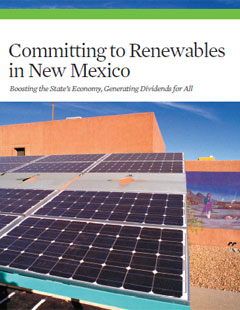New Mexico is at a crossroads. As recently as 2011, more than 70 percent of in-state power generation came from coal; since then, three coal units have retired, with another 4 planned for closure in the coming years. Economics are simply not in their favor.
But while the decline of New Mexico’s coal industry is inevitable, the composition of resources that will replace it is not. The state’s largest electric utilities are proposing a steadily increasing dependence on natural gas, which, while cleaner than coal, is still a fossil fuel—and not the cheapest option.
New analysis by the Union of Concerned Scientists reveals that renewable energy, not gas, is the state’s lowest-cost long-term solution. A strengthened renewable portfolio standard (RPS) would help ensure the transition to clean energy actually takes place.




